
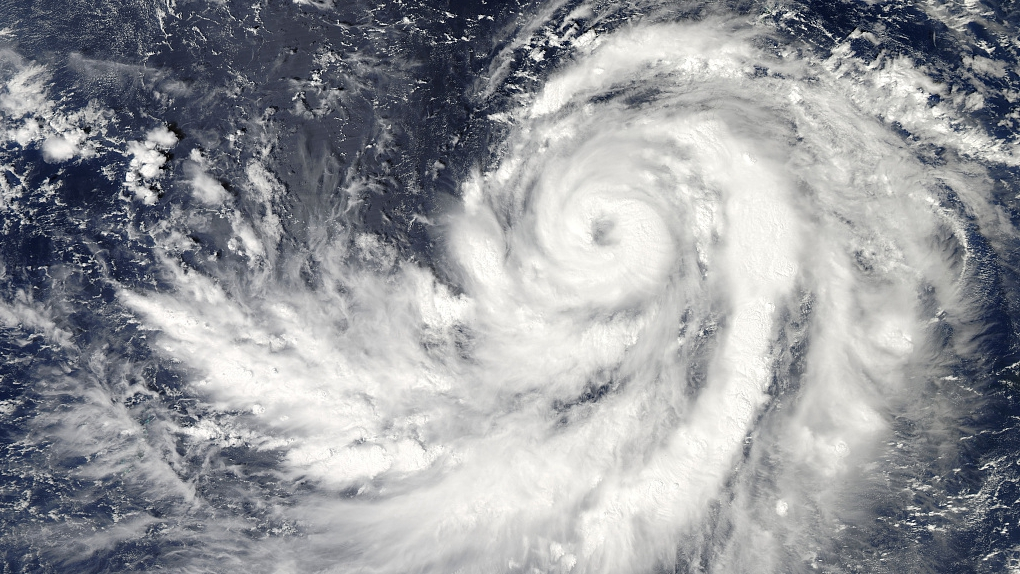
Super typhoon Lekima, reportedly the strongest typhoon in the western Pacific so far this year, landed on eastern China coast at around 1:45 a.m. on Saturday. It brought strong winds and torrential rain and has forced the evacuation of hundreds of thousands of residents in east China's Zhejiang Province.
China is already dealing with Lekima's devastating effect.
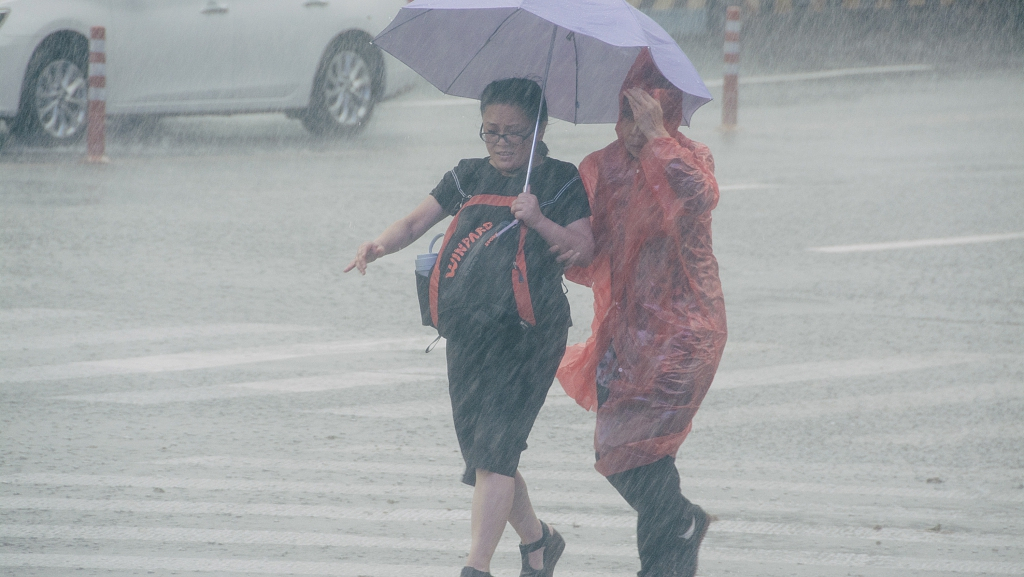
Pedestrians hit by rain in Shanghai on Saturday. /VCG Photo
What is a typhoon?
Typhoon, one of the most catastrophic natural hazards, is a tropical cyclone that usually forms in the western Pacific Ocean. Hurricanes are also tropical cyclones but they form in the eastern Pacific Ocean.
The air above the ocean is constantly moving, but when the temperature over a large area of sea surface reaches 26.5 degrees Celsius, a body of warm air is formed above the ocean surface. The warm air is lighter and therefore rises. At the same time, low-altitude winds blow in new air filling in the gap.
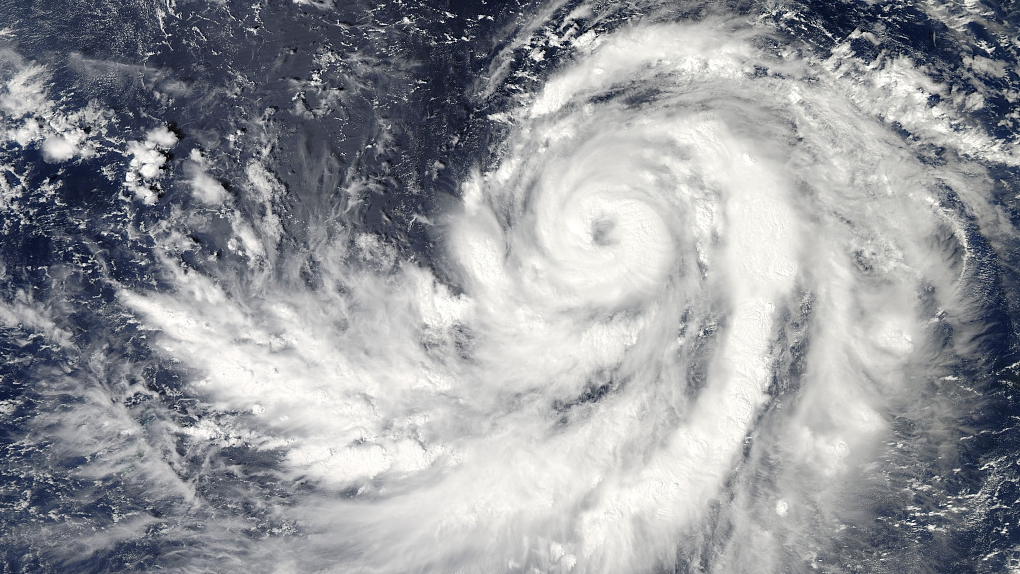
Tropical cyclone. /VCG Photo
The rising air contains a huge amount of moisture, and on its way upward, cools down and condenses, resulting in huge clouds above the ocean surface. With more air rising, the clouds become thick and heavy. The process of condensation then releases the heat energy in the water vapor, providing the cyclone with more power and creating a self-sustaining heat cycle.
The Coriolis force, or the deflection force of earth rotation, eventually pushes the air to rotate around the center, creating a cyclone "eye" with lower atmospheric pressure. In this stage, the cyclone matures as it continues growing large and moves as a result of the global wind circulation.
The World Meteorological Organization defines a typhoon as a tropical cyclone with the maximum sustained winds of 118 km/h or more near the center.
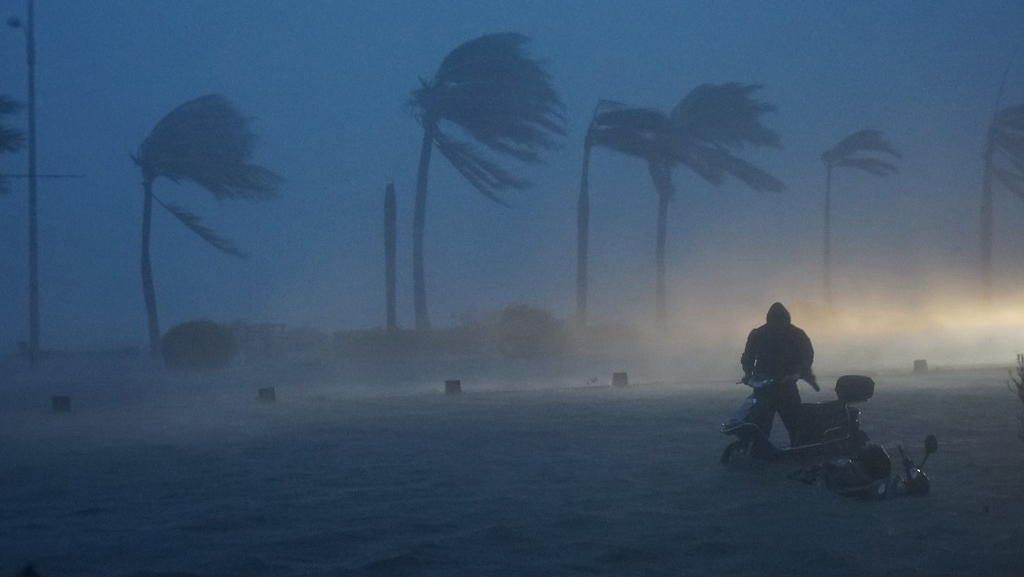
Motorcycle rider trapped in typhoon. /VCG Photo
Destructive impact
A typhoon that crawls onshore can unleash a devastating power through two destructive forces in the coastal regions: Wind and water.
The wind gust could slam directly into a building, blowing the roof off a home, launching tree branches, building materials, and other debris into the air and structures.

The aftermath of a typhoon. /VCG Photo
The torrential rains and coastal storms that typhoons bring can trigger flooding. Besides forcing people to leave their homes, floods can affect rescue and aid efforts by obstructing roads.
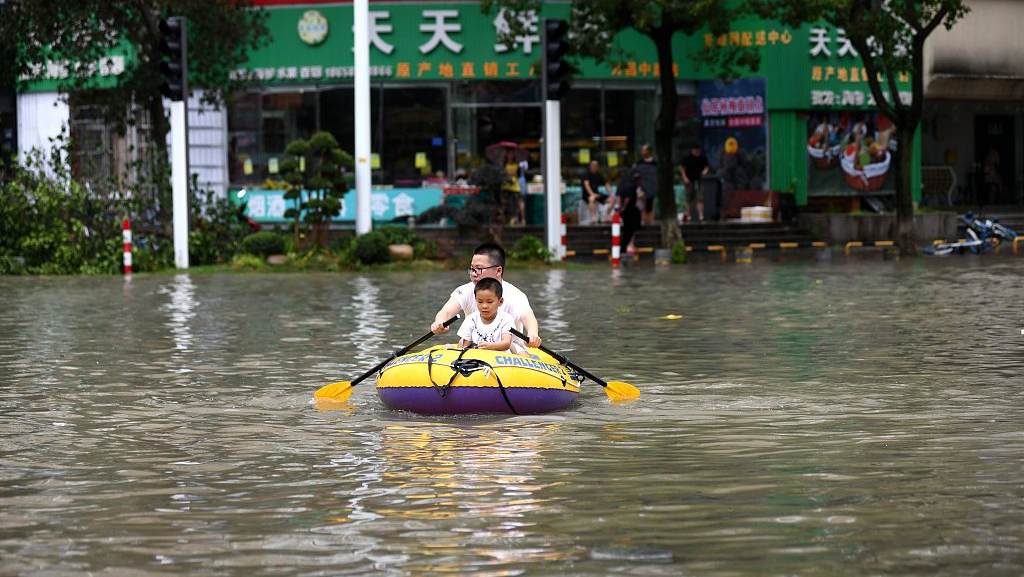
Residents crossing street on boats in Zhejiang after Lekima landed. /VCG Photo
Every year, typhoons in the western Pacific claim numerous lives in coastal regions. In 2013, super typhoon Haiyan is reported to have caused over 6,000 deaths in the Philippines.

Graveyard for victims of typhoon Haiyan in the Philippines. /VCG Photo
Damage prevention
Satellite images allow scientists, meteorological agencies and emergency units to predict, detect and monitor a typhoon, leading to improved readiness and emergency response.
Different countries have different warning mechanisms for a typhoon. China, for example, has a four-tier typhoon warning system divided into four colors: Red for the most serious, orange, yellow and blue.
Before a typhoon, residents in coastal areas are usually warned to secure their boats, reinforce windows and house security, follow the news and evacuate when necessary.
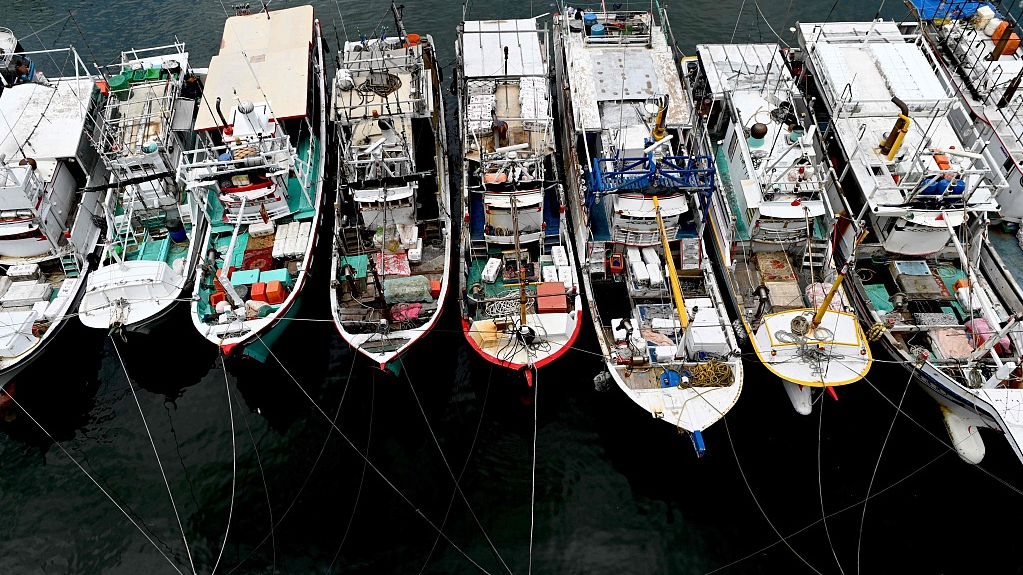
Fishing boats tied up at harbor in Taiwan. /VCG Photo
About Natural Phenomena
The series Natural Phenomena takes you to an unknown world of natural forces. From natural disasters such as earthquakes and volcanic eruptions, to spectacles like aurora and mirage, let's dig into the secret of our planet.
(Cover image via VCG)
(If you want to contribute and have specific expertise, please contact us at nature@cgtn.com.)

Copyright © 2018 CGTN. Beijing ICP prepared NO.16065310-3
Copyright © 2018 CGTN. Beijing ICP prepared NO.16065310-3